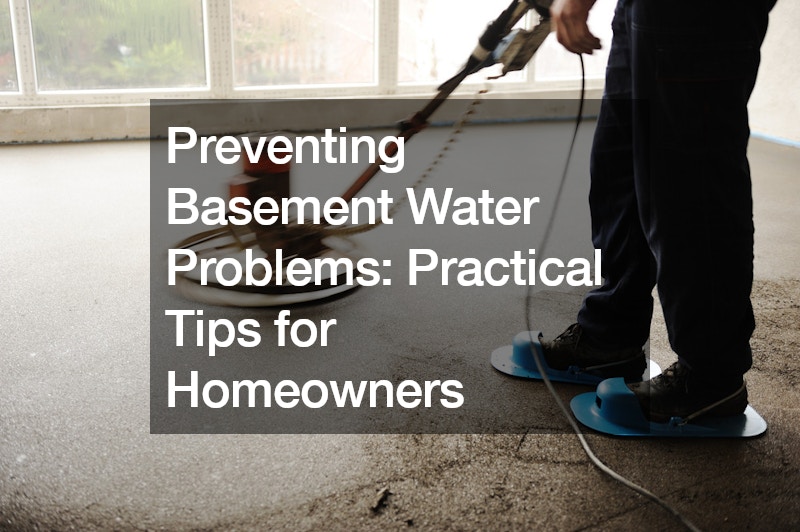Basement water problems can be a homeowner’s nightmare, leading to costly repairs and potential damage to valuable possessions. However, with a proactive approach and some practical tips, you can safeguard your basement against water infiltration. Here, we’ll explore some key strategies to help you keep your basement dry and your home protected.
1. Sump Pump Discharge:
Many homeowners rely on sump pumps as their first line of defense against basement flooding. While sump pumps are essential, it’s equally important to ensure that the discharge from the pump is directed away from the house.
This prevents water from pooling around the foundation and seeping into the basement. Consider extending the discharge pipe to ensure water flows into a drainage area, away from the house.
2. Soil Slope:
The slope of the soil surrounding your home plays a crucial role in preventing water from infiltrating your basement. Over time, soil settlement can cause water to flow towards the house rather than away from it. Regularly inspect the soil slope and add soil as needed to maintain proper drainage away from the foundation. Pay special attention to areas where soil settlement may occur, such as near patios or concrete slabs.
3. Window Wells:
Window wells are common entry points for water into basements, especially if they are not properly maintained. Ensure that window wells are several inches above the surrounding soil level to prevent water from pooling. Consider installing window well covers to keep out debris and direct water away from the window wells. Additionally, use permeable materials such as rock to facilitate drainage and prevent water buildup.
4. Gutters and Downspouts:
Properly functioning gutters and downspouts are essential for directing rainwater away from your home’s foundation. Clean gutters regularly to prevent clogs that can lead to overflow and water damage. Install leaf guards to minimize debris buildup and ensure that downspouts extend several feet away from the house to prevent water from pooling near the foundation. Regular maintenance of gutters and downspouts is key to preventing basement water problems.
In addition to addressing exterior factors, consider investing in basement floor coatings to provide an extra layer of protection against water infiltration. High-quality floor coatings can help seal concrete floors, preventing moisture from seeping through and causing damage. By creating a barrier between the concrete and any water present, basement floor coatings can help keep your basement dry and free from water-related issues.
6. Maintaining Uniform Soil Moisture:
Another often-overlooked factor in basement water problems is soil moisture levels. During dry weather, soil near the foundation can shrink and pull away, creating cracks that allow water to enter the basement when it rains. To prevent this, maintain uniform soil moisture by running sprinklers or using a sprinkler hose near the foundation. By keeping the soil consistently moist, you can minimize the risk of soil settlement and subsequent water infiltration.
7. Foundation Inspection and Maintenance:
Regular inspection of your home’s foundation is crucial for identifying potential issues that could lead to basement water problems. Look for cracks, gaps, or signs of water damage around the foundation and address them promptly. Seal any cracks or gaps to prevent water from seeping into the basement. Additionally, consider waterproofing the foundation to provide an extra layer of protection against moisture infiltration.
8. Proper Landscape Grading:
Ensuring that the landscape around your home is properly graded can also help prevent basement water problems. Ideally, the ground should slope away from the foundation, directing water away from the house. If you notice areas where water tends to pool near the foundation, consider regrading the landscape to improve drainage. Proper landscape grading can significantly reduce the risk of water infiltration into the basement.
9. Interior Waterproofing Measures:
In addition to addressing exterior factors, consider implementing interior waterproofing measures to further protect your basement. This may include installing a sump pump with a battery backup system, applying waterproof sealant to basement walls and floors, and using waterproofing membranes or drainage systems to divert water away from the foundation. Interior waterproofing measures can provide an extra layer of defense against basement water problems.
In conclusion, preventing basement water problems requires a combination of proactive measures both inside and outside the home. By addressing issues such as sump pump discharge, soil slope, window wells, gutters, downspouts, basement floor coatings, foundation inspection and maintenance, proper landscape grading, and interior waterproofing measures, homeowners can effectively safeguard their basements against water infiltration. Regular maintenance and vigilance are key to ensuring a dry and protected basement for years to come.
.







